
Traveling Will Be More Fun If You Know This! The Unique Customs and Culture of Okinawa
Okinawa, which once thrived thanks to trade with China and other Asian countries, has many unique customs and culture that are completely different from the Honshu (mainland) of Japan. Below are some facts that you should make an effort to know in order to deepen your knowledge of Okinawa.
This post may contain affiliate links. If you buy through them, we may earn a commission at no additional cost to you.
The Dialect is Unique
As expected, the first thing that has to be discussed is “language”. The spoken dialect in Okinawa is so unique that people from other regions actually think it’s a foreign language, even though they are all Japanese! The Okinawan dialect is called “Uchina-guchi”, and it is known for its pronunciation of the basic Japanese vowels “aiueo” as “aiuiu”. The characteristics of the language significantly differ between the main island of Okinawa, and Ishigaki-jima and Miyako-jima. Even within the main island, there are differences in dialect depending on the area.
There are many Okinawan phrases that are popular throughout Japan, but here, the basic “arigatou” (thank you) will be taught. Japanese people ordinarily say “Arigatou”, but in Okinawan dialect, they say “Nifee-dee-biru”. If you get a chance, try to say it!

What is "Yuntaku"?
The term "yuntaku" is Okinawan for "chit-chat". Lately, it seems to be used for more than just that, describing stuff like communication between guests at a minshuku (inn or gest house) or at a drinking party. The nuance seems to have been lost.
In an inn where “yuntaku” is encouraged, alcoholic drinks are passed around after dinner. Guests spontaneously group up to drink together, and people sing along with the sanshin (three-stringed lute native to Okinawa). These events often occur night after night. Being able to enjoy “yuntaku” just might be one of the real pleasures of traveling to Okinawa!
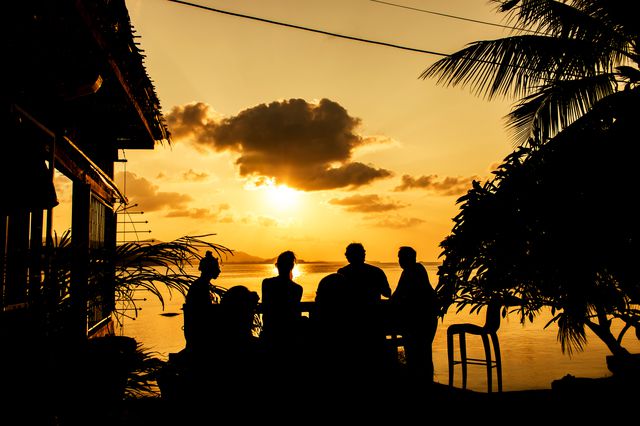
Many Traditional Performing Arts
Okinawa, which flourished as the Ryukyu Kingdom long ago, is still a land with many different traditional arts today. For example, “kumi odori” (combination dance) is a popular art that is registered as an UNESCO Intangible Cultural Heritage. You can expand your world view by perusing literature centered on Ryukyu classic music or Ryukyu Kogo (ancient language used in Okinawa), as well as by observing integrated arts where Okinawan dances are harmonized.
At the end of a celebration (such as a festival or wedding) and at the climax of an event (such as a concert or banquet), it is tradition to participate in Kachashi, where all attendees dance and share in the joy of the occasion. Everyone will dance along with an Okinawan folk song that’s being played at a fast tempo, such as a fast performance with a sanshin.
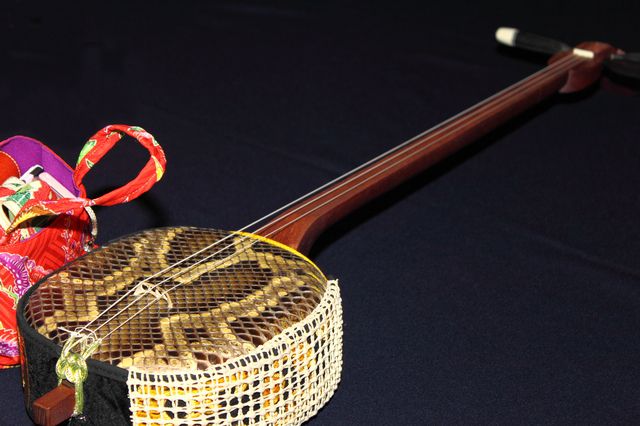
The Famous Traditional Performance Art, Eisa
One of the most famous Okinawa traditional performing arts is called “Eisa”. Held around mid-September each year, it is the time when youth groups from different areas dance and parade within the region. The rhythm is achieved with the help of Taiko drums, but there is also a kind of “Eisa” that only involves hand movements. Visitors will get to appreciate the performers’ energetic dancing up close!
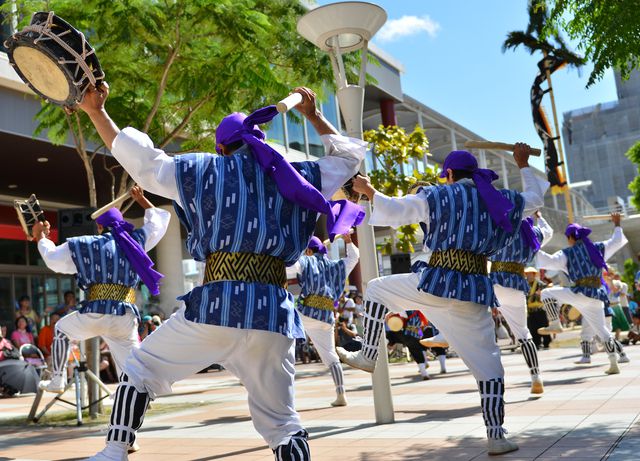
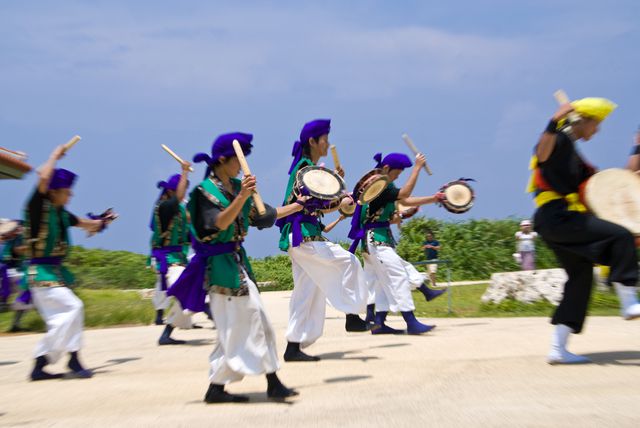
Powerful Fishing Boat Race – Hari
The last thing to be discussed is the Hari, which is a race involving traditional fishing boats that has been held in Okinawa for around 600 years. Held for three days in early May each year, it is a festival where people pray for a bountiful catch and safety at sea. This event is held in various places, such as Naha, Kume-jima, and Maeganeku. During the event, guests are treated to thrilling sword fights. There are too many must-see areas to this event, such as the enthusiastic shouts from the audience and the reception of the ships. Depending on the area, there may be places where they’ll do test embarkations at the same time as events like live music by famous Okinawan artists.
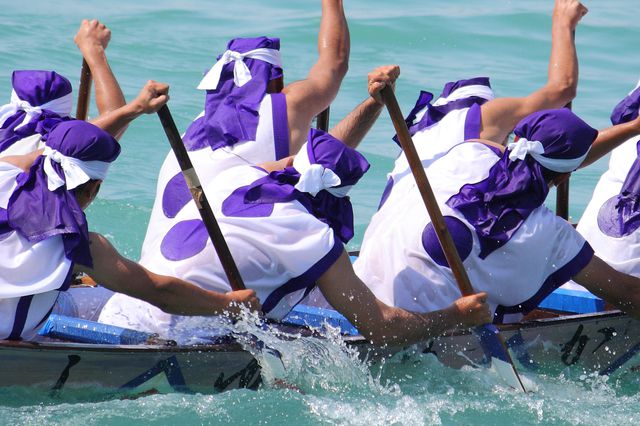

Knowing about the culture and customs of the place you’re visiting should make traveling to that area even more enjoyable. If you’ve become interested in Okinawa after reading this article, please try going there!
The information in this article is accurate at the time of publication.





